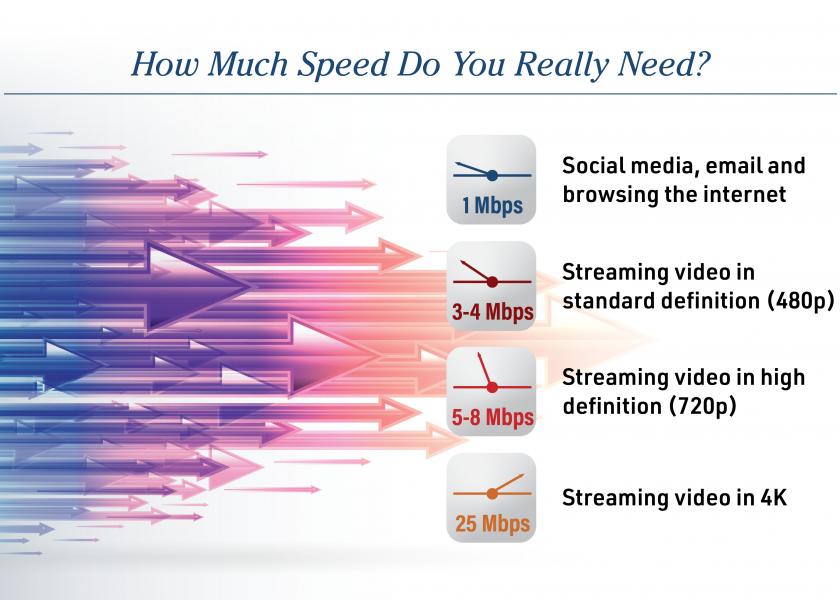Check Out Your High-Speed Internet Options

High-speed internet service in the U.S. is a classic case of the haves and the have nots.
In heavily populated states and metropolitan areas, people have access to 4G or 5G technology.
But that’s not the case in many rural parts of the country. At least 14 million farmers, ranchers and residents in rural America don’t have access to broadband service, according to the 2018 Federal Communications Commission (FCC) Broadband Deployment Report. (The FCC defines broadband internet service as a speed of at least 25 megabits per second [Mbps] download and 3 Mbps upload.)
The main issue is most internet service providers don’t see a sufficient return on their investment to offer broadband in regions with a low population.
Speed, Availability, Cost
Slow internet service can be a serious problem, as it can negatively affect a population’s quality of health care, education and even its financial well-being, says Victoria Smith, staff researcher for SatelliteInternet.com.
“Be informed about what’s available in your area and what’s the best plan for you,” she says.
“Satellite and DSL (digital subscriber line) are perhaps some of your best options in terms of availability. Satellites can beam down an internet connection to pretty much anywhere, and DSL hooks up to your existing phone lines,” she adds.
Most people will probably only want DSL if the alternative is dial-up service. DSL is faster than dial-up, and you usually have a choice of price plans based on speed.
At the other end of the spectrum is satellite service. It is available through Viasat and HughesNet. Monthly costs range between $50 and $150, depending on the service.
To check your internet options, visit broadbandnow.com.
To find the 10 fastest and slowest cities for rural internet and the pros and cons of various service providers, visit: AgWeb.com/high-speed-internet







